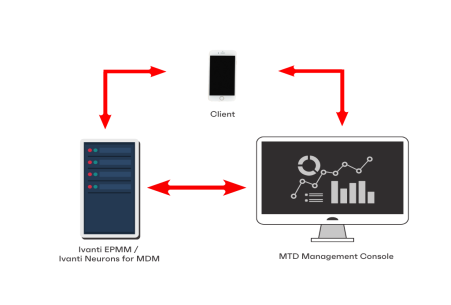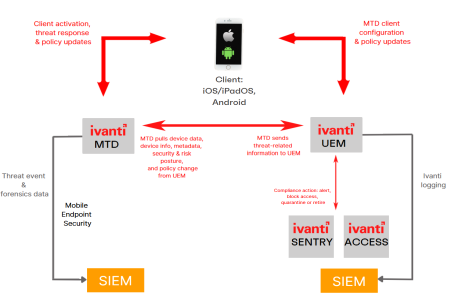Ivanti Mobile Threat Defense overview
The Ivanti Mobile Threat Defense (MTD) consists of three components, as illustrated in the following figure.
- Mobile Device Management (MDM) server (Ivanti EPMM)
- MTD client application (Ivanti Mobile@Work for iOS and Android)
- MTD Management console (previously referred to as zConsole)
Figure 1. Components of Ivanti Mobile Threat Defense

The Mobile Device Management (MDM) administrator is able to configure Ivanti EPMM to automatically install the required version of MTD client application, Ivanti Mobile@Work for Android and iOS, deploy and enable an MTD Activation token on selected devices, and configure the components to interoperate to protect devices from mobile threats.
After initial on-boarding, the following workflow is required to configure Ivanti Mobile Threat Defense:

- Ivanti EPMM provides an MTD Activation token to Ivanti Mobile@Work clients on selected devices.
- The threat defense functionality is enabled on selected devices.
- The MTD console authenticates and establishes communication with Ivanti EPMM and synchronizes device parameters.
- The administrator defines threat defense policies on the MTD console.
- The administrator defines MTD local actions policies on Ivanti EPMM.
- MTD-enabled Ivanti Mobile@Work clients check-in and begin communicating with MTD console and with Ivanti EPMM.
- MTD-enabled Ivanti Mobile@Work clients periodically scan the device for threats and actions are taken in accordance with defined server-initiated and local action policies.